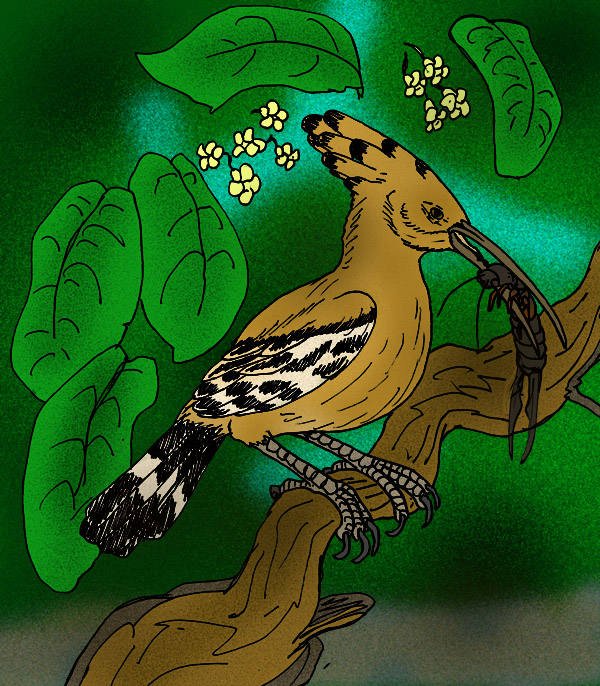Giant Hoopoe (Upupa antaios) - Wiki Giant Hoopoe
From Wikipedia, the free encyclopedia
Order: Coraciiformes
Family: Upupidae
Synonyms: Upupa antaois (lapsus)
[Photo] Reconstruction of the (presumed to be) flightless Giant Hoopoe (Upupa antaios) of Saint Helena. presumed to have gone extinct soon after the island's discovery and colonization. URL: http://en.wikipedia.org/wiki/Image:Upupa_antaios.JPG
| Permission is granted to copy, distribute and/or modify this document under the terms of the GNU Free Documentation License, Version 1.2 or any later version published by the Free Software Foundation; with no Invariant Sections, no Front-Cover Texts, and no Back-Cover Texts. A copy of the license is included in the section entitled "GNU Free Documentation License". |
The
Giant Hoopoe (
Upupa antaios), also known as St. Helena
Giant Hoopoe or St. Helena
Hoopoe, is an extinct species of
Hoopoe (family
Upupidae), known exclusively from an incomplete subfossil skeleton.
It was endemic to the island of Saint Helena in the South Atlantic. It is considered that it was much larger than its European and African relatives. In addition it was completely flightless. The incomplete skeleton which was found in 1975 by palaeontologist Storrs Olson consists of both coracoids and the left femur. The reasons for its extinction remained unknown, though, it is assumed that it became extinct soon after, if not immediately after, St. Helena was discovered and colonized in 1502, due to the introduction of predators such as
black rats, and
domestic cats, as well as habitat destruction.
As all known
hoopoes are insectivores that feed primarily on large insects, the
Giant Hoopoe may have been a predator of the St. Helena
earwig, an insect which has not been seen alive since 1967.
http://en.wikipedia.org/wiki/Giant_Hoopoe| The text in this page is based on the copyrighted Wikipedia article shown in above URL. It is used under the GNU Free Documentation License. You may redistribute it, verbatim or modified, providing that you comply with the terms of the GFDL. |
